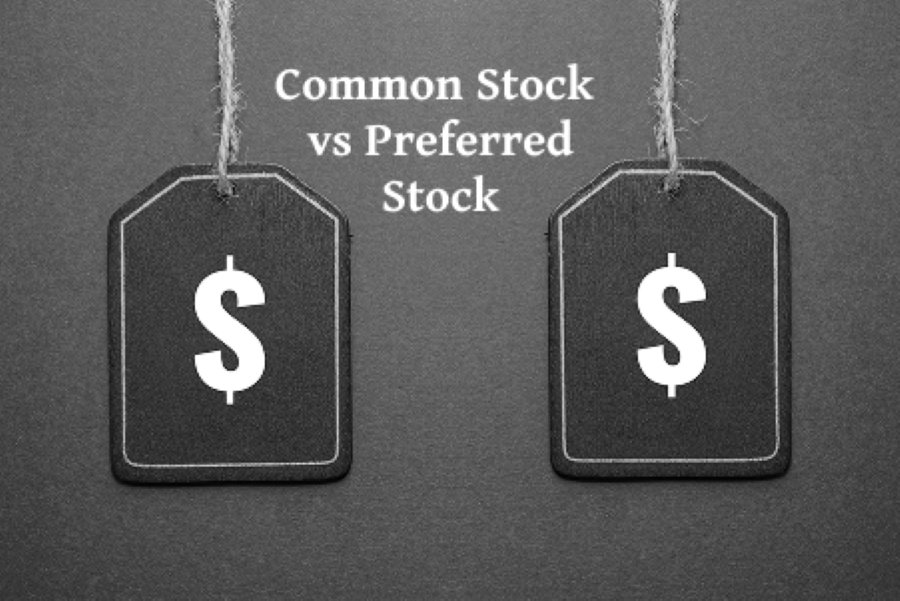Simplifying Life Insurance in India
Common Shares vs Preferred Shares: Which One You Should Add in Your Portfolio?

Knowing the differences between common stock and preferred stock is key for investors. This helps them match their portfolios to their financial goals. Common stock gives voting rights and a chance to grow in value. This makes it attractive for people who want growth and a say in company decisions.
Preferred stock offers fixed dividends and priority for asset distribution in liquidation. This appeals to investors who want steady income and less risk. This article explores the main differences between these two types of equity and examines their key aspects to help you make smart investment choices.
Quick Summary
Pro Tips
- The main difference between Common stock and preferred stock is that common stock represents ownership with voting rights, whereas preferred stock offers fixed dividends.
- In liquidation or bankruptcy, preferred shareholders have priority over common shareholders, offering greater downside protection than common stock.
- Preferred stock may be convertible, meaning stockholders can switch to common shares under specific conditions, whereas common stock is non-convertible.
- Common stock is for investors who seek growth; preferred stock is for investors seeking stable income with lower risks.

Table of Contents

What are Common Stocks?
Common stocks, or ordinary shares, show ownership in a company. Shareholders typically vote on important matters, including selecting the board of directors and approving mergers.
- Common stocks can offer shareholders dividends and capital gains, making them attractive for long-term investors who want growth.
- Owning common stock comes with risks. The profit potential comes from the increasing stock price, not dividends.
- A company usually sells common stock to raise money for growth or operations. This lets investors own a small part of the firm.
What are Preferred Stocks?
Preference shares, also known as preferred stock, are equity securities. They usually pay a fixed dividend and have priority over common stocks in case of bankruptcy or dissolution.
- Preferred stockholders don’t vote. However, they receive dividend income before common stockholders do.
- They are usually less volatile than common stocks, which attracts investors who seek income and stability instead of growth.
- Preference shares combine features of both bonds and equity. They offer a steady return and some ownership in the company.
What is the Difference Between Common Stocks and Preferred Stocks?
When investing in the stock market, it’s essential to know the differences between common and preferred stock. The following table provides an overview of their key distinctions:
Benefits of Common Stocks vs Preferred Stocks
Common and preferred stocks have different features that benefit different investment objectives. The following table summarises their key benefits:
Disadvantages of Common Stocks vs Preferred Stocks
Common and preferred stocks come with certain disadvantages that an investor must understand. Below are the disadvantages of common and preferred stocks:
Common or Preferred Stock: Which is Better For You?
Whether common or preferred stock is better depends on an investor's preferences and market outlook.
- Common stock is better for those who want to benefit from the company's growth. It also gives them a say in management decisions. It's a smart choice for those who plan long-term, can handle market ups and downs, and want to grow their capital.
- Preferred stock appeals to investors seeking stable income with lower risks. It is more stable because dividends are fixed at a certain level. Also, preferred stock has a stronger claim on the company's assets during liquidation.
- Neither is better overall. They each meet different investment goals. If you want aggressive growth and control, you should own common stock. For a stable income and to keep your capital safe, preferred stock is a good choice. Many investors seek both stock types. This helps them balance growth and income in their portfolios.
In conclusion, whether to invest in common or preferred stock depends on your goals. If you want a growing investment, common stock is your best choice. If you want less risk and steady dividend income, preferred stock is better. Aligning your stock choices with your financial goals helps boost your portfolio's potential. This approach allows you to invest with greater confidence.
Disclaimer: The information provided on this website is for general informational purposes only and should not be construed as financial, investment, or legal advice. While we strive to provide accurate and up-to-date content, we do not guarantee the completeness, reliability, or suitability of the information for your specific needs.
We do not promote or endorse any financial product or service mentioned in these articles. Readers are advised to conduct their own research, consult with financial experts, and make informed decisions based on their unique financial circumstances. Any reliance you place on the information provided here is strictly at your own risk.
You May Also Like to Read
FAQs on Common Stock vs Preferred Stock
What is a Common Stock?
What is a Preferred Stock?
What is the main difference between common stock and preferred stock?
Which stock is riskier: common stock or preferred stock?
Can preferred stocks be converted into common stocks?
Do common stockholders always receive dividends?
Why do companies issue preferred stock?
Who gets paid first during liquidation: common or preferred stockholders?
Do preferred stocks provide voting rights?
Which is better for long-term growth: preferred or common stock?
Are dividends from preferred stocks guaranteed?
Why might an investor choose common stock over preferred stock?
Is it possible to lose money with common or preferred stocks?
Which stock offers better liquidity: common or preferred stock?
What is cumulative preferred stock?
Which type of investor benefits most from preferred stocks?
How do economic conditions impact common and preferred stocks?
Must-Read Articles about Stocks
Latest News
Read More




















